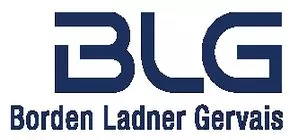- within Technology topic(s)
- with Senior Company Executives, HR and Finance and Tax Executives
- in Canada
- with readers working within the Environment & Waste Management, Insurance and Oil & Gas industries
The Government of Alberta recently confirmed its plan to implement a data centre levy framework as part of its broader AI Data Centre Strategy. The levy framework requires that large-scale data centres connecting to Alberta's electricity grid contribute to provincial revenues, but attempts to maintain the Province's competitive position in attracting AI data centre investment. Because Alberta does not tax data centre equipment through sales or property taxes like other jurisdictions, the Province has opted for a hardware-based levy to generate revenue early while maintaining its low-tax framework.
Data centre levy framework overview:
- Computer hardware levy (2 per cent): Effective Dec. 31, 2026, any grid-connected data centres drawing 75 MW or more in power will face a 2 per cent levy on computer hardware.
- Corporate tax credit offset: The levy will be fully creditable against Alberta corporate income tax. Once a data centre becomes profitable and pays corporate tax, the levy will have no net effect on their tax burden.
- Designated industrial property status: Land and buildings associated with qualifying data centres will be assessed as designated industrial property by the Province and taxed at the municipal level – similar to other large-scale industrial assets.
- Municipal incentives: Municipalities may offer their own property tax incentives or deferrals to attract projects to their local jurisdiction.
Implications for data centre proponents
While the minutiae of the data centre levy are still being ironed out, we offer a few initial observations. First, the 75 MW threshold for the levy aligns with the threshold for projects governed by Alberta Electricity System Operator's (AESO) "large load" framework. This appears to reflect the Province's intention to closely monitor system-level impacts of connecting facilities drawing power equivalent to that of a small city and follows the AESO's decision in June 2025 to limit large load connections to 1,200 MW (of more than 16,000 MW of data centre load applied for to date) through the end of 2028.
The levy is technically scoped to apply only to grid-connected data centres, and the Province has previously encouraged proponents to "bring their own power." However, most large-scale data centres still require a grid tie to ensure redundant power supply, which is essential for reliability, risk management, and meeting service level commitments, while preserving the option to sell excess generation back into the system. The levy's incentive for data centres to self-supply could therefore be limited by practical considerations, at least for larger operators."
Lastly, the hardware underpinning AI data centres make up a large portion of upfront capital costs for developers – a 2 per cent levy translates into a material line item for project proponents. This added layer of cost could dampen investor enthusiasm until greater certainty emerges. Such a levy appears to work in a way that is different from something like the federal Scientific Research and Experimental Design (SRED) tax program.1 Where a taxpayer is a Canadian-controlled private corporation (CCPC) that qualifies for SRED, the tax credits are refundable in cash if the CCPC is not sufficiently profitable. Only when a taxpayer ceases to be a CCPC (e.g., goes public, controlled by non-residents or public corporations) are SRED credits non-refundable. Conversely, this levy is a real cost to companies that are insufficiently profitable to use the tax credit but tax neutral to those that are profitable. Recognizing this, the Province has signalled that it may develop other programs for payment-in-lieu-of tax and deferral mechanisms to ease early-stage capital pressures, aiming to strike a balance between capturing public revenue while maintaining Alberta's appeal as a data centre destination.
The content of this article is intended to provide a general guide to the subject matter. Specialist advice should be sought about your specific circumstances.






